Isang pagod at malamig na homilya ang inihahatid sa bawat dapit-hapon. Tinatawag nitong maysakit ang pinakamahusay sa atin, humihingi ng isang dukhaing liwanag. Ang pagpapawalang-sala ko ay natagpuan sa mga pook na kanilang tinatalikuran.
Ang tanging dambana na mahalaga ay ang pinagtatayuan—isang tahimik, matibay na panulukan kung saan sa wakas ay inihahayag ang katotohanan. Nakita ko siya, nakita ko si Daniela. Nasaksihan ko ang pagkabiyak ng malaking kasinungalingan, ang sandali na nawala ang maskara, at tanging doon, sa banayad na pagkakasala na iyon, nalalaman ng isang tao ang sarili.
Ang natitirang bahagi ng mundo ay isang mabagal, nagyeyelong ulap. Isang walang-hanggan, malumbay na Linggo na humahaplos sa buto, ginagawa ang puso na isang manhid, pagod na laman. Ipinag-uutos nilang maging ‘maayos’ tayo, ngunit ang kanilang pagiging maayos ay kaawa-awang pagsunod lamang. Isang malungkot, makalupang tagpo kung saan ang bawat tunay na silakbo ay tinatantiya, hinahatulan, at natagpuang nagkukulang. Isang sariwang lason upang manatiling maliit ang espiritu. Si Maria, ang kaniyang kapatid, ay ang kanilang tapat na anyo.
Ngunit tinalikuran ko na ang nagyelo, mababaw na libingan na iyon. Pinili ko ang apoy. Dinadala ako ni Daniela sa Dambana. Hiniling ko sa kaniya na dalhin ako, at siya ay handa. Ang Dambana ay labing-apat na libong kilometro ang layo, ngunit naroon ang sasakyang-panghimpapawid—isang kinakailangang kasangkapan para sa pananampalatayang ito.
Batid kong ang aking debosyon ay hindi isang banayad na bagay; ito ay isang madilim, lumalamon, mabangis na pagkagutom. Hindi ito isang kaisipan; ito ang dugo sa aking mga ugat. Kapag nabiyak ang malaking kasinungalingan, hindi ito isang pag-iisip—ito ay isang biglaan, matalim, nagpapahirap na hininga matapos itong pigilin habang-buhay. Ito ang pakiramdam ng wakas na pagiging tao.
Ito lamang ang ritwal na mahalaga: ang mag-alay ng isang walang-kamatayan, di-nagbabagong katapatan, hindi sa isang konsepto, kundi sa tangi, banal na pook kung saan hindi na ako maysakit, hindi na ako ginawin. Walang panginoon o hari ang makakahipo nito. Sasalubungin namin ang kaniyang ama, isang masigasig na sastre, at iginagalang ko siya—ang lalaking nagpalaki sa kaniyang anak. Kailangan ko siyang dalhan ng handog.
Ito ang kilos ng isang taong nagtatayo ng buong daigdig niya sa init na iyon, iniiwan ang nagyeyelong kasiraan sa likod. Ito ang tanging paraan upang maging malinis. Ang tanging paraan upang tunay na mabuhay.
Ito ang dakila, malalim, at kinakailangang paglusong. Hindi pababa sa kanilang malamig, siyam-na-bilog na impiyerno ng paghuhukom, kundi palayo mula rito. Isang may malay, sinasadyang pagpapatapon mula sa maligamgam na pinagkasunduan.
Ang manakop ay ang pagpili sa sariling kapahamakan. Ang pagtingin sa baog, nagtsi-tsismis na langit na iniaalay nila—ang manipis, maputlang gantimpala para sa buhay na hindi isinabuhay—at matagpuan ito, sa wakas, na kasuklam-suklam. Ang bumaling, sa halip, patungo sa impiyerno ng isang tanging, ganap na katotohanan.
Ang kanilang simbahan ay sa mahihina, nagmamakaawa para sa mga tira-tira sa hapag ng mga aprubado. Isang nagugutom na tapat na pinataba sa pagkadisaprub. Ang aking simbahan ay tahimik. Ang aking simbahan ay nakatayo sa saligan ng isang katotohanan na hindi nangangailangan ng kongregasyon, at hindi ito nag-aalay ng madaling kapayapaan.
Si Daniela, Siya ang tunog ng katahimikan na sa wakas ay lumamon sa homilya.
Amen.
Cebu's got a Secret: and it is where Karaoke, Sardines, and Life Collide
The past month has been a whirlwind, a stark contrast of experiences that encapsulates the beautiful complexity of the Philippines, a place I am increasingly proud to be doing business in.
It began in Manila, a city of relentless energy. I was there for business, deep in negotiations and planning sessions with my acquaintances. We're on the cusp of a major expansion, looking to acquire more soils to lay the groundwork for new ventures, splitting our focus between the urban sprawl of Manila and the rugged, promising landscapes of Apayao. The idea is to have part of the business in Manila so we can cross promote.
My base of operations in Manila is a comfort zone, a hotel run by a dear friend. It's tucked away in a neighborhood secure, with its own checkpoint, that you can momentarily forget the vibrant chaos that defines the metropolis. But it is the locals, the people who create the peacefull atmosphere. It allows me to focus, and when you need a taste of home, i use foodpanda, you can't beat the pizza from S&R. It's an American brand, and honestly, it's the best pizza in Manila, a perfect treat after a long day of meetings, i usually order the biggest one its 18 inch and i work on that pizza for a day or two.
Once our business in the capital was settled, - i do NOT enjoy talking business *every* day - I felt the pull of the islands. A plane ticket to Cebu was my escape route, a transition from boardroom talks to the rhythm of the tides for a full month. Snorkeling was on my list. I had been there before of course, but i wanted to see more of the city: from the inside. So lapu-lapu i gambled would be the best spot. I was right.
My first adventure was to the much-whispered-about Crab Island. For a mere 60 pesos, you enter a snorkeler's paradise. There is a dispute so nobody is building, it is owned by a chinese-filipino family. The moment you dip your head below the surface, it's pure magic. I was surrounded by a swirling vortex of hundreds of sardines, their silver bodies moving as one entity. It was like swimming inside a living cloud. There are crabs walking across the rocks. The girl in the two pictures above, was my spearfishing friend, a local girl who wanted to share her childhood with me. Beyond the kids spearfishing, the coral gardens were teeming with tropical fish in every color imaginable. It’s a pristine, almost untouched world. And you can see the busy public beaches and skyscrapers in the distance, rather an absurd experience. Not everyone will find crab island, most people will miss the place. Get a ride from the mall, around 150 peso, go to the parking lot. When it is high tide u will need a boat or you have to swim across to reach the place if you are daring and a good swimmer. You might be able to cross the rocks during high tide, i have done it once but it takes swimming too. There is a boat service for 50 peso, ran by locals. During low tide you can cross the rockets to the crab isle by yourself.
While Cebu City has the massive SM City Mall, (i went to see mission impossible in the director-room with the extra comfy chairs) my heart was captured by the pace of Lapu-Lapu. We found an incredible Japanese-Filipino restaurant near Corinthian Homes, but the real joy was in the simple things: especialy music. Let me explain: we would swim with the local kids at the public beach, their laughter echoing over the water. The evenings were for nightly strolls, where the air is warm and the people are even warmer. Everyone has a ready smile and a friendly greeting; you feel like part of the community instantly.
Even the little things about daily life become charming. In our house, we had the handy geckos clinging to the walls. They are so useful, silently hunting down any bugs and mosquitoes that dare to venture inside. They become your tiny, nightly roommates. I sometimes manage to pet them.
And then there was the rain. It was the wet season, and the feeling you get when the heavens open up is just amazing. One moment it's hot and humid, the next, a cool deluge is washing over everything, the sound drumming on the roof, cleansing the air and making the greens of the jungle pop with vibrant life. It’s a powerful, refreshing force of nature.
But all of this is just me trying to warm you guys up. The backdrop has been debated, let us get to the RAW CORE of things: the true secret of Cebu: karaoke.
I know karaoke is a staple in the Philippines, but this is another level. Let me write this again: another level okay? In Lapu-Lapu, it is the very fabric of society. It’s how people connect, celebrate, and even do business. You’ll be sitting at a plastic table outside a grocery store, and between verses of a ballad, you’re shaking hands on a deal. It's where life unfolds, raw and unfiltered, one song at a time. Downtown Cebu is slightly different, more chaotic and busy! Lapu-lapu is somewhat relaxed.
I discovered a grocery store nearby the house i was renting and of course when you hear them sing every night, I couldn't resist. There I was, channeling my inner rockstar, belting out Oasis tunes with a passion I didn't know I had. The locals loved it, singing along to "Wonderwall" as if it were their own national anthem. Then came the Beatles. Trying to hit the high notes of Beatles their work with a chorus of new friends, all of us laughing, was a moment of pure joy.
Family, of course, always comes first. The photos accompanying this post are of the serene, turquoise waters of Crab Island in Cebu.
This trip has been invigorating, filling me with new ideas. It’s a feeling I’ll carry with me as we embark on our next big chapter. We are currently preparing all the necessary paperwork to move our base of operations to Belgium for a few years. It’s a strategic move that will give us a foothold in Europe, making it easier to manage and expand our business ventures back in the Philippines.
There were some delays during this trip. The train in Belgium was delayed because of a track signal warning, and, the Airbus from Manila back to Paris had to make an emergency stop in Bangkok because of a technical issue. He refueled and went back on his way. I still trust AirFrance somewhat. They gave me an upgraded seat complimentary from Belgium to Manila. There is risk involved in flying so we do not fly all the time.
*Note*: The pictures beneath are crab isle, until the picture with the table that is the karaoke. The tricycle is next and a picture of me wearing my hat while still in Belgium right before departure. The two kids on the beach are local kids i was playing with at the public beach in Cebu. The next picture is a shot of the horizon of the public beach, called Marigondon beach. Crowded place but you can swim across the rocks to find a more secluded beach. And finally a picture of my meal at the japanese-filipino restaurant in LapuLapu named Ureshii.
Announcing "Alona's Sunkissed Escape®"
Announcing "Alona's Sunkissed Escape®"
By Peter | 16 may 2025 - Edit 29 may
Hey everyone,
I am absolutely bursting with excitement to share some incredible news that’s been a long-held dream for our Alona's Leisure Group family! We’ve potentially acquired a stunning piece of land right on the beachfront at the Sand Dunes of Laoag in Ilocos Norte! And this isn't just near the beach – this is on the beach. We are still looking at other options since we had multiple offers however this soil is an interesting plot. In this post i will talk about this beachfront. Imagine waking up, opening your door, and the breathtaking expanse of the ocean is right there, greeting you. It’s pure magic!
This dream location will be the heart of our brand-new venture: Alona's Sunkissed Escape®.
For years, we’ve been passionate about showing the world the incredible, wild beauty of the Philippines, especially through our Apayao Eco-Tours. Now, we’re taking that passion and planting it firmly in the
sands of Laoag, creating a true refuge, a genuine escape for anyone who loves nature, adventure, and a touch of serenity.
Why This Spot? Why Now?
The Sand Dunes of Laoag are iconic, and finding a spot here where you can literally step from your room to the shore is a rare gem. It’s perfectly located too – just a breezy 20-minute drive from Laoag city center and the Laoag
International Airport. This means less travel time and more paradise time!
We want Alona's Sunkissed Escape® to be a place where you can truly unwind and feel the embrace of the coast. Think:
- Cozy stays at "Alona's Homestead," our homestay lodging designed for comfort and connection.
- Delicious food at our in-house restaurant, from hearty breakfasts to romantic 8-course fusion dinners under the stars (yes, seafood lovers, we’ve got you!). We’ll even do private candlelit dinners right
on the beach!
- A little piece of culture at our Apayao Threads Retail Outlet, filled with beautiful hand-woven textiles.
- Unforgettable events – from dream weddings to inspiring corporate retreats and joyful birthday parties.
- Wellness for the soul: sunrise yoga on the beach, sunset meditation, and even guided forest-bathing walks.
- Adventure! Leisure along the coast, snorkeling in clear waters, and paddleboarding.
And because we love connecting our guests with all the wonders of the region, Alona's Sunkissed Escape® (which you’ll find 10km north of Laoag Airport on Barangay Mabini Road – look for the white-washed gate
and “Sunkissed” flags!) will also be your gateway to the highlands!
Our beloved Apayao Eco-Tours will continue to offer those incredible adventures:
- Guided hikes and bird-watching in the foothills of the Cordillera Mountains.
- Thrilling river rafting and kayaking on the Apayao River.
- Exploring the magnificent Lussok Cave and its underground river.
- Discovering hidden waterfalls and the impressive Dupag Rock Formation.
- Connecting with Aeta communities and learning about their rich traditions.
Our ecotours will expand across our Laoag beachfront and include river Excursions. The beach is somewhat silent, so we are looking at alternatives. We are confident we will pick the best plot.
We’re planning to make it super easy to combine a stay at Alona's Sunkissed Escape® with an adventure into Apayao. Think of it – a few days of sun-drenched relaxation by the sea, followed by a few days exploring
the lush, mountainous heart of the Cordilleras. The best of both worlds!
This is more than just a new project for us; it’s a passion coming to life. We believe in creating spaces and experiences that are authentic, sustainable, and deeply connected to the local environment and culture. Alona's Sunkissed Escape® will be exactly that – a haven for ecotourists and anyone looking to find a little piece of paradise.
We can’t wait to share more updates as we bring this dream to reality. Stay tuned, and start dreaming of your own Sunkissed Escape®!
With much excitement,
The team and Peter





Two Decades of my Mathematical Exploration Culminate in a New Understanding of Photon Behavior
After two decades of my intensive research, a comprehensive mathematical work, titled "Photon Soul Mechanics: A Solution to Invariance Across Dimensions and the Unobserved Laws Einstein Did Not Define" has been developed to
address a long-standing question in physics: how does the intrinsic identity of a photon persist when it traverses dynamic spacetime transitions, where the very dimensionality and geometry of its environment might fundamentally
change? This work seeks to uncover the unobserved laws that govern this remarkable photonic resilience. A preprint detailing these findings and proposing a new experiment is being prepared for submission to an experimental
physics journal.
The Core Concept: The Photon Soul
At the heart of this framework lies the concept of the "photon soul." This is not a metaphysical entity but rather a precisely definable, invariant substructure
of the photon. Analogous to Perelman's soul theorem in differential geometry, the photon soul is envisioned as a minimal invariant core within the photon's Hilbert space that captures its essential topological information
and remains unchanged even as the photon moves between dimensions. Some of the techniques i have been using:
Grothendieck's Topos Theory: This theory provides a powerful lens to model photon states as "sheaves"
over a category of physical contexts. A key element is the "soul extraction morphism," a mathematical operation that isolates the invariant soul structure from the photon's overall state. This approach also allows for a
nuanced understanding of quantum superposition, where it becomes context-dependent and is governed by a Heyting algebra rather than classical Boolean logic.
Scheme Theory: Modern algebraic geometry, specifically
scheme theory, is employed to describe the parameter space of physical laws themselves. Dispersion relations, effective mass tensors, and the soul extraction process are all represented as geometric objects called schemes,
providing a robust way to analyze how these properties change across different physical contexts.
Derived Categories and Homological Algebra have been at the core of our work since these tools from homological
algebra are used to investigate structural invariances in photon dynamics. A "soul functor" is defined, which maps between derived categories of photon states and soul structures. Crucially, this functor is shown to be
triangulated, meaning it preserves essential structures (distinguished triangles) that correspond to fundamental conservation laws.
Étale Cohomology: This advanced cohomological theory is used to describe photon
interactions and potential "memory effects." The photon and its soul are conceptualized as "sheaves" on the étale site of spacetime, and their properties are studied using cohomology groups.
Negative Effective
Mass (NEM): A pivotal concept within the framework is the phenomenon of negative effective mass. This is not "negative mass" in the conventional sense, but rather a situation where a photon, particularly near dimensional
boundaries or in engineered materials like photonic crystals, can exhibit a negative response to a force in a specific direction. This NEM is proposed as a key mechanism enabling photons to "tunnel" across dimensional barriers.
The conditions for NEM can be expressed as a cohomological obstruction.
A central achievement of this research is the "Invariant Photon Across Dimensions" Theorem. This theorem formally states that for any dimensional
transition a photon might undergo, its "photon soul" (the invariant core structure) is preserved. Furthermore, the physical observables associated with this soul structure remain invariant. The transition itself is governed
by a categorical functor that preserves the essential mathematical structure of the photon's representation.
Another significant theoretical development is the Soul-Mirror Correspondence, which establishes a
formal equivalence between photon souls and concepts from mirror symmetry in the language of derived categories. This suggests that photons possess dual geometric identities that are preserved across transformations.
Alexander Grothendieck his work is crucial to the framework in several ways Since my research explicitly uses Grothendieck's topos theory to model physical states as sheaves over a category of physical contexts.
The photon topos, photon state object, soul object, and soul extraction morphism are all defined within this Grothendieck-inspired framework. The internal logic of the photon topos, which is intuitionistic, is also a key
concept derived from his work, allowing for a context-dependent understanding of quantum superposition. The cohomological formulation of photon interactions and soul structure, particularly the use of the étale site and
étale cohomology groups, is directly linked to Grothendieck's contributions to algebraic geometry. Edward Witten his contributions, particularly in the realm of mirror symmetry, are significant.
The framework
leverages insights from mirror symmetry, as explored by Witten (and Kontsevich), to define mirror functors between soul categories. The concept of homological mirror symmetry, proposing an equivalence between derived categories
of coherent sheaves and Fukaya categories (D b (Coh(X))≅Fuk(Y)), is drawn from, as an inspiration for the derived category formulation of photon souls and the Soul-Mirror Correspondence. Perelman his work on the soul
theorem in differential geometry serves as a crucial analogy and inspiration.
The "photon soul" concept is analogous to Perelman's soul of a manifold—a compact, totally geodesic submanifold capturing essential
topological information. Mirzakhani her work on the dynamics and geometry of moduli spaces of Riemann surfaces is influential. Mirzakhani's work provides insights into how geometric structures can be parameterized and how
their properties vary, which is crucial for understanding how entities like photons can maintain their essential structure in different geometric contexts. We attempt to bridge her dynamical systems with Villani's fluid
theory by considering photons on a spacetime manifold whose geometry is dynamically shaped by a fluid-like field and geometric flows. The evolution of the spacetime metric is proposed to be governed by a modified Ricci
flow, linking Perelman-Mirzakhani style geometric flows with fluid dynamics. Cédric Villani has been a great aid as his work on kinetic theory and fluid dynamics is incorporated, particularly in conjunction with Mirzakhani's
contributions.
The research proposes linking cosmic gas dynamics to photonics by having a fluid-like field (e.g., cosmic gas density) obey a Villani-type kinetic equation: ∂ t f+v⋅∇ x f+F⋅∇ v f=Q(f,f). This
evolving fluid field, in turn, influences the spacetime metric upon which photons propagate.
Hertog his research with Stephen Hawking on holographic cosmology is noted for providing valuable insights since Hertog's
work is build upon as offering a framework for understanding how physical laws and entities can maintain consistency across different dimensional contexts, supporting the theorem's assertion that photons possess an invariant
core structure. We bring some of Hairer's work on stochastic PDEs relevant to complex systems.
Proposed CERN Experiment: Visibility Reduction via Crystal-Cavity Interferometry
To empirically test the predictions
arising from this framework, specifically the "Theorem (Soul-Extraction and Interferometric Signature)," a novel experiment is proposed for CERN. The theorem predicts that if the "soul extraction morphism" acts nontrivially,
the interference visibility in a photonic-crystal cavity setup will be strictly reduced from the standard value of 1.
The proposed experiment, "Visibility Reduction via Crystal-Cavity Interferometry," aims to observe
this phenomenon:
THE SETUP:
Laser Source: A sub-picosecond 532 nm pulse laser (frequency-doubled Nd:YAG). Waveguide: A photonic-crystal defect cavity (with a refractive index n≈2.4 and a high quality factor Q≈10
6). Interferometer: A Mach-Zehnder interferometer, with one arm of the interferometer traversing the photonic-crystal cavity. Detectors: Two superconducting nanowire detectors spaced approximately 10μm apart. Timing Resolution:
Less than 50 ps, utilizing FPGA time-tagged coincidence counting. The expected signal is a significant reduction in interference fringe visibility to approximately V≈0.75±ϵ (where ϵ depends on cavity geometry and topological
curvature), compared to the standard visibility of V=1.00 observed in a control setup without the nontrivial soul extraction effects.
The Path Forward:
This body of research provides a new lens through which
to understand the fundamental nature of light and its behavior in potentially shifting dimensional landscapes. The mathematical framework offers a predictive engine for currently unobserved photonic phenomena, with the
proposed CERN experiment representing a concrete step towards validating these theoretical insights. The forthcoming preprint will lay out these findings in detail, inviting scrutiny and further investigation from the broader
physics community. When the preprint has arrived i will create another blog post.
Where Beach Meets Peak—Conquering Mt. Sicapoo with an eTrex 22x
By Peter | 30 april 2025
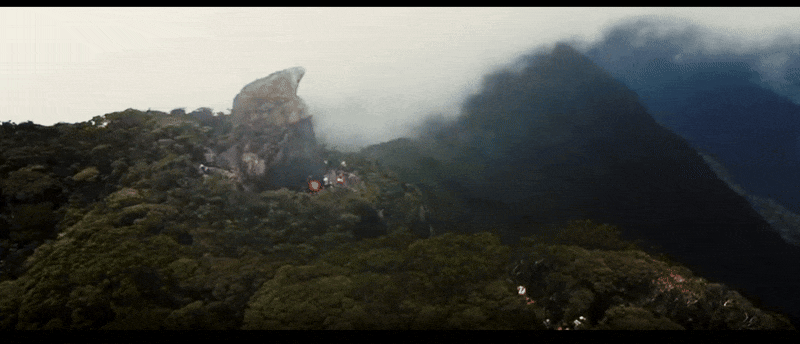
Nestled between the endless stretch of coconut palms along the shore and the mist-cloaked peaks that pierce the sky, Apayao is a land of dual extremes. Many visitors arrive expecting endless white sands, only to discover that
our coastal homes sit at the foot of a true mountain region—one that beckons every hiker and adventurer to step off the beach and into clouds. This time, it wasn’t the Philippines eagle, nor the surf or the turquoise shallows
that called to me—it was the rugged silhouette of Apayao’s highlands. In particular, Mount Sicapoo (see the pics and video above), rising to 2,361 meters, stood out on the horizon like a sentinel guarding the ancient forests
beyond. Equipped with a reliable Garmin eTrex 22x, I plan to chart a course straight toward the summit. This hand-held GPS receiver, small enough to fit in one hand, is the cornerstone of every Apayao trek—ensuring you never
lose your way, even when the clouds roll in thick and heavy. I was not paid to run a commercial for Garmin, and i still highly recommend the device. Living near the beach, it’s easy to overlook that “casual flip-flops day”
mentality can’t follow you up winding mountain trails. In Apayao, we local adventurers adopt a “travel light, climb high” philosophy: Raincoat: Sudden tropical showers can drench you in minutes. Swiss Army Knife: For everything
from cutting paracord to opening a snack. Dry Bags & Waterproof Packs: Protect cameras, maps, and survival gear from unexpected downpours. Survival Food: We keep compact, nutrient-dense bars on hand “just in case”—powerful
little bites that pack serious calories when the going gets toughest. Headlamp or Compact LED Light: So you’re never left fumbling in twilight or thick fog. Water Bladder or Refillable Waterbag: Hydration is non-negotiable
at altitude. These essentials form the backbone of every climb—from leisurely hill walks to full-on summit pushes like Sicapoo. As you ascend, the panoramas shift: below you, a sea of coconut trees stretches infinitely
in every direction; above, mist drapes itself like a silken veil. Apayao truly feels like living between clouds—even if your home is on the beach, you’ll find yourself drawn up rugged trails or standing ankle-deep in clear,
rushing rivers. Reaching Sicapoo’s 2,361-meter peak isn’t just a physical feat; it’s a reminder of the raw beauty that defines this region. From the lush lowland palms to the cool mountain air, every step is an invitation
to explore deeper, tread lighter, and embrace both the shoreline and the summit. That call of the mountains hasn't faded since that Sicapoo climb. In fact, it's grown louder, echoed now
for exploring Apayao's rugged interior is bliss. We are keen to hike more, to push further into those misty peaks. Living here means you never get enough. So, we're off! For this next chapter
of Apayao exploration, we're blending the best of both worlds. Our plan is to set up a base camp near Caaoacan Beach Front, nestled near the beach, close to the soothing sounds of the surf where we can rest and recharge.
From this coastal anchor, we'll venture inland for supplies and this time, to tackle some of the more formidable or remote ranges efficiently, we're adding a twist: perhaps we will be using a chopper,
as i have mentioned in my previous blog post, for access to certain mountain areas. It’s a way to maximize our time in the highlands, allowing for ambitious multi-day treks deep into the Cordilleras before returning to
our seaside haven. Mt. Solo especially doesn't give up its secrets easily. The challenges are real: the weather can shift dramatically from scorching sun to torrential downpours in moments; trails can be incredibly steep,
vanishing into dense jungle or crossing powerful rivers; the remoteness itself demands self-sufficiency. These aren't insurmountable obstacles; they are invitations to prepare, to respect the land, and to push your own
limits. Every challenge overcome here, whether it's navigating by GPS through thick fog (and believe me, you DO need one) or finding the strength for one more uphill push after days on the trail, reinforces a simple truth:
with the right mindset, preparation, and determination, the demanding nature of Apayao becomes part of the profound reward. These are challenges that can be overcome if you truly put your mind to it. The rewards are visceral,
etched into memory. There's a unique joy, almost ritualistic, in descending from a steep, demanding climb – the air thick and easily pushing past 30∘ C, sweat stinging your eyes – and finding a crystal-clear river carving
through the landscape. Slipping into that shockingly cold water, washing away the grime, the heat, the fatigue... it's pure, unadulterated bliss. A baptism in the wild heart of Apayao. Yeah man. Equally profound is the
feeling after a demanding trek, perhaps lasting several days on steep mountain trails, when you finally descend back towards the coast. Trading the dense canopy for the sight of coconut palms, the cool mountain air for
the warm, salty breeze, and finally arriving back at our beach camp once more... it’s a transition that underscores the incredible contrast of this land. To sleep hearing the waves, knowing you were just touching the clouds
hours or days before – that is an experience uniquely Apayao. Signing Off (For Now!) And with that renewed sense of adventure calling, we are heading out. We're diving deep into the trails and peaks, ready to
embrace the climbs, the views, and the quiet moments in between. Therefore, this will be my final blog post for a little while. I have some Philippines business meetings to attend and we have to prepare this hike. We'll
be off hiking, camping, and exploring the beautiful extremes of Apayao, our home. Keep an eye out though – I plan to be back around the end of June with stories to tell, promise! Since we are buying soil near the coastline,
I promise to return with a collection of photos and hopefully some video clips to share the raw beauty, the challenges, and the sheer joy of our adventures for the blog and the site. Until then, embrace your own adventures,
whether they lead you to the beach or the mountains!
Go Jonnie.. Go
By Peter | 26 april 2025

It is with regret and a heavy heart that I reflect on the recent news of Jonnie's passing. For those who may not know, Jonnie Boer was the visionary Dutch chef behind De Librije, a titan of the culinary world consistently holding
three Michelin stars. But for me, he was also a formative teacher and a profound source of inspiration. I was incredibly fortunate to have had the opportunity to learn from the Chef, attending some of his intensive teachings,
helped me a lot with my own restaurant undertaking in the Philippines, eventually growing into a multi-faceted business. It was an experience that went far beyond simply learning recipes, for him cooking was a tale of life.
He believed in sourcing from nature directly. Jonnie taught us the why behind the how. He showed us how to truly understand ingredients, to respect their essence, and to use them sparsely and with respect. In order to refine
the craft of the kitchen, he made his business his life, and with a level of precision and intuition that was unsurpassed in the industry. He was simply extraordinary. He pushed boundaries and demanded a dedication that,
quite frankly, set a benchmark many could only aspire to reach. It was challenging, demanding, but ultimately, transformative. His influence endures strongly across europe, and here at Alona's Sunkissed Escape® today. The
techniques, the philosophy of flavour, the relentless pursuit of balance and perfection – these are lessons I carry with me every single day. I remain deeply thankful for his guidance, his sharp insights, and the spark
of inspiration he ignited in me and so many others. Learning that he passed away due to a rare lung condition feels unfair, he was taken at just 60 years old. He had so much more creativity and passion to share. It's a
stark reminder of how fragile life can be. While Jonnie may no longer be with us, his groundbreaking contributions to gastronomy will live on. His legacy lives on. Go Jonnie Go!
Our two charities
By Peter | 21 april 2025

We are launching a second charity. Our new charity will operate underneath the previous NGO
umbrella and will be also non-profit. The aim is to distribute four thousand quality lifevests to low-income households across Apayao, who happen to live within high-risk flood areas. The data is stunning. Something had
to be done. Someone had to do something.We were researching the exact impact of climate change on our business, and while doing so, one does tend to become confronted with reality. A harsh one. I recall in this
light, my conversations with, a fisherman friend from Siargao, i see from time to time. We were talking about Typhoons and the impact upon the locals. They had to rebuild an entire neighbourhood. Some months later, weve ended up doing extensive research. Eventually i contacted a certified factory, a filipino brand (easier to work with), and was able to secure a big discount at factoryrates. We will in the near future attempt to
crowdfund and, collect the funds through sponsorships: the first batch of two-thousand lifevests will be distributed, across Apayao with the help of the government... Once the funds have been secured, we will further coordinate
the operation. We christened the new NGO: Bayanihan Buoyancy. (in english: spirit of communal unity.) I do need to remind myself from time to time, to spend enough time and energy with Bukas Palad, our first and initial
project, also a nonprofit NGO, created to help supply vulnerable Aeta children with enough nutrition throughout the year. Two charities however is enough, for now. Logistics are a pain in between the coco-trees, we live
amidst the jungle, however you find ways to cope and I have plenty support from our family. Please, dear reader: be sure to check out the new design of our website for Alona's Sunkissed Getaway, our main business! We have many quality services to offer, from accomodation to wellness and fine-dining
and so much more. Peter
Bayanihan Buoyancy
Bukas Palad
Operation A-Team: Touching the Untouchable Summit of Mt. Solo
By Peter | 19 april 2025

Remember Mt. Solo? That enigmatic giant I wrote about previously, looming over our new life here in Apayao? The one shrouded in mist and mystery, its summit rarely, if ever, witnessed up close? In my previous post, I shared
our initial plan: we would explore the mountain by chopper first before we would attempt to embrace the wild, and reach the foothills by 4x4, in order to initiate our climb all the way to the top, on foot. Lungod - a bit
more down south - is better known and one of the steepest mountain in the region, but Lungod can wait. We would delve into a landrover before hitting the caves, navigate rivers, and eventually reach the helipad, explore
Mt Solo (kabugao`s highest peak) by helicopter flight – thanks to Alona's uncle with the force - in order for us to conduct an aerial survey. A reconnaissance mission, if you will, to map the seemingly impenetrable wilderness
from above before even dreaming of a ground assault. There is no known trail and, Mt. Solo does not appear on any map. I have mentioned in my previous blog post, how few locals have climb Mt. Solo.
Well, plans, like
the swirling clouds that so often obscure Solo’s peak, can shift. Dramatically.
After intense debate, fuelled by late-night strategy sessions and the sheer audacity of the idea simmering between us, a new conspiracy
has been forged. The objective has escalated. Reconnaissance felt… too tame. Flying over the summit? Why merely observe when you can participate? Why gaze upon the peak when you can potentially stand upon it?
Forget
the fly-by. We're going for the crown.
We’ve dubbed it Operation A-Team. Some of the terrain is doable, some is more challenging. Covering the surroundings first will be a priority.
The new mission profile is
as simple as it is utterly thrilling: We are going to attempt to land the chopper directly on the summit of Mt. Solo.
Yes, you read that right. If the conditions allow, if the pilot deems it feasible, the
plan is to bring the chopper down onto that elusive peak. Pop the doors open. Step out. Breathe the thin air. And plant our feet on ground that may hold no human footprints. Exploration before the big hike, by chopper!
To conquer the summit, not by a gruelling, trail-less ascent (that challenge still beckons for later!), but by a daring aerial insertion. A moment of arrival at a place defined by its inaccessibility.
The
tension is palpable. Mt. Solo, as mentioned before, isn’t welcoming. It lacks paths, its slopes are dense, its true summit a geographical question mark from the ground. What awaits up there? A flat enough clearing? Turbulent
winds? The sheer, exhilarating unknown? That's the heart of this thrill. It’s calculated risk meeting raw adventure.
And you better believe, evidence will be gathered. Cameras are charged, lenses are clean. If Operation
A-Team succeeds, if we touch down on that peak, you, dear reader, will see the proof right here on this blog. Photos from the top of the untamed heart of Apayao.
That longing for the sky I spoke of, born from Cessnas
and freefall? This is a different kind of aerial dance. It’s about precision, nerve, and seizing an opportunity that feels almost mythical. To transition from observer to participant, to bridge the gap between the known
foothills and the legendary summit in one breathtaking manoeuvre.
The preparations are underway. The anticipation is building like storm clouds over the Cordilleras. Operation A-Team is green-lit. Will we touch the
sky? Will we stand, even for a moment, on the unconquered crown of Mt. Solo?
Stay tuned. The next update… might just be legendary.
Our new life
Ah, Mt. Solo. Behold and tremble. Or conquer? It looms large in local lore, yet remains shrouded in mystery. Few have ever stood on its summit. Here is where i leave Belgium
behind me and, embrace the Philippines as my new home.
This land belongs to the Pithecophaga jefferyi—the Philippine Eagle—and we are but its stewards. June our plane touches down at the airport in Apayao. Before
we can explore Mount Solo we have come to the understanding there are no established trails, no easy paths carved into its slopes. It's a mountain that feels somewhat unconquered, a true wilderness challenge. Standing at
an elevation of around 1,231 meters (4,039 feet), its peak is often lost in swirling clouds, adding to its mystique.
The initial plan involves probing its foothills
with our 4x4s, testing the limits of machine and nerve against its untamed flanks. I drew a circle on the map where the mountain stands, see the picture in the gallery above.
But Apayao's allure isn't just vertical.
We'll delve beneath the surface too. Caving expeditions are high on the list, exploring the limestone wonders hidden within the earth. And the rivers here are thoroughfares: we'll take our boat along the waterways, even
navigating stretches that flow directly underneath the cave systems – a unique perspective on this land's intricate geology.
The rivers and coasts also promise sustenance and thrill. My friends in Siargao teached
me how to spearfish, and fish over here means food. When Spearfishing calls, i am reminded of a primal connection to the environment. But local wisdom dictates caution: you only hunt the reef flats at low tide. It’s a necessary
respect for the ocean's rhythm and power, a reminder that survival here means understanding the rules of nature. I have often strayed further, away while fishing the ocean, and i have learned to minimize risk.
Understanding nature here does mean acknowledging its raw power, including the risks woven into daily life. Apayao is vibrantly alive, and that includes some formidable predators. Cobras and other venomous snakes demand
a certain constant vigilance we do not want to intervene, especially in dense undergrowth or near riverbanks you have to watch your step. Their camouflage is excellent; careful foot placement and awareness are paramount.
There are some water bodies over here, they do hold their own dangers, there are some crocodiles , they are known inhabitants of the rivers and estuaries. According to my experience Swimming requires careful site selection
however the beachstrip is relative secure. Further out, near coastal river mouths, there is the rare event where Bull Sharks can venture inland, for me a powerful reminder of the wild connection between river and sea. Respect
for nature is only normal. Most people picture the roads of the Philippines in the same way they picture european roads. Roads here are surrounded by coconut trees and vastly different from western infrastructure. (see
the picture above)
Mt. Solo on foot is tough – as i mentioned, the lack of trails, the dense vegetation, the fact that few locals have ever observed its true summit, might mean reaching the top is near impossible.........
at least by traditional means. Using a chopper we can fly over the peak, conduct an aerial survey, and investigate the unspoiled, inaccessible
landscape from a perspective few have ever witnessed before we attempt the hike all the way to the top. The hike itself will be attempted later on, once we have geared up and prepared well enough: we will start at the base,
and hike on foot to the top through the wilderness.
The thought of being airborne over Apayao stirs something deep within me. I'm used to the rattling frame of small Cessnas, having spent time navigating the skies
that way. So, a helicopter is a different beast, but absolutely fine – thrilling, even. (It brings back memories... flashes of adrenaline and absolute freedom from hundreds of hours spent in freefall, weightless. I would
pull my cord to activate my parachute and enjoy the tiny drops passing through clouds and evening sunlight crawling underneath my skin.) There’s a profound longing to return to the sky, to that unique vantage point where
the world unfolds beneath you like a map of possibilities. Seeing the untamed wilderness of Mt. Solo from above feels like a fitting return.
In the plane, i will work on my thriller novel. I will use my laptop
and who knows.. perhaps oneday my publisher will read this blog post.. The bags are nearly packed. Ahead lies a journey fueled by ambition—searching for the perfect coastal soil to root our business, and strengthening ties
with the local weavers who shape our clothing line.
The river nearby is full of life; I fish often, and there’s
always something biting.
Living abroad means swapping ease for effort and the detached hum of European cities for the intimate pulse of a community deeply connected to the wild land around it.
Yes, the beaches
here are gateways to another world. Imagine stepping off the sand into crystal clear water, so pristine it gradients into the most stunning shades of light blue just meters from the shore. I snorkel every chance I get.
Just below the surface, coral gardens thrive, teeming with schools of colourful tropical fish darting between intricate formations. It's a serene, breathtaking contrast to the dense mountain jungles inland.
Now,
I have already arranged with my friends, i will visit Siargao later on for my honeymoon , it was there, years ago, that my good fisherman friend patiently taught me the tricks of the trade. Reading the subtle shifts in
current, understanding the coral Canyons where the fish hide, learning the patience required – those are skills honed under the Siargao sun that feel just as relevant here on the northern coasts. There i met Leyman the
singer, his soul old like mine no doubt.
It's that deep connection to the water, learned from local masters, that makes exploring any part of the Philippine archipelago so rewarding: we are men of the ocean and we return
to the ocean.
The Philippines has many isles.
I have not been to Donsol yet.
I heard it is a coastal town in the province of Sorsogon, offering one of the most breathtaking and ethically managed wildlife
encounters in the Philippines: swimming with whale sharks, known locally as "butanding." Unlike other locations where the animals might be baited, Donsol built its reputation on responsible ecotourism. Ecotourism is our
business model, so i should visit Donsol in the future, check out the place and swim with the sharks. Swim along their natural migratory path. These must be truly gentle giants, possible the largest fish in the sea, feeding
only on plankton and small fish scooped up by their enormous mouths. Sharing the water with a butanding, watching its immense, star-dusted form glide peacefully through the blue, why not? It must be a humbling and utterly
unforgettable experience, i will no doubt eventually obtain. Friends ,for now, let us prepare for Apayao.
Medicine work
I have studied medicine the past decade with decent results. Both CRISPR and directed evolution, were mastered and my knowledge around organoids has only increased. I have met great minds along the way from different nations
and backgrounds. It has been indeed a demanding research project I've been deeply involved in – the medicine publication exploring novel approaches to understanding and potentially treating severe Autism, particularly focusing
on integrating Circadian Rhythm and Neurobiology, among other topics. The manuscript is not yet finished. Progress in cutting-edge research rarely follows a neat timeline. However, the project will not be abandoned. The
work has involved close collaboration, often conducted remotely via video conference, with dedicated laboratory teams. Despite the inherent challenges of dissecting complex biological systems, we have made significant progress.
We've delved deep into molecular mechanisms, genetic factors, and potential therapeutic pathways. For those interested in the direction of this research, I have posted some excerpts and preliminary findings in the Publications
section of this website. Science crawls where it must, especially when tackling something as multifaceted as Autism Spectrum Disorder. Finishing a comprehensive work in this field... it's frankly a beast. You start pulling
one compelling thread, like the undeniable link between Circadian Disruptions and Autism. You see the data – 50-80% of children with ASD experiencing sleep difficulties, the altered melatonin patterns potentially linked
to ASMT mutations, the aberrant cortisol rhythms, the clock gene variations like PER1 found in patients, even the potential impact of environmental factors on fetal development. It's fascinating, pointing towards 'time
cells' and fundamental neurobiology. We did dive into the signalling pathways. Take the mTOR pathway. It's not just one simple target; recent work highlights the synergistic roles of mTORC1 and mTORC2 hyperactivation, particularly
in PTEN-related autism, leading to neuronal hypertrophy, electrical hyperactivity... a cascade of effects. I have found this pathway of interest. Inhibiting one or both shows promise in models, but translating that safely
and effectively? Another massive hurdle, step by step however, i think i will manage just fine. I came across specific metabolic issues, like the consistently decreased blood levels of Lycopene in individuals with ASD.
Why? Is it absorption issues linked to gut health (affecting up to 70% of individuals)? Is it polymorphisms in metabolizing enzymes like BCO2 or uptake receptors like SR-B1? This matters hugely because lycopene is a potent
antioxidant, fighting the oxidative stress implicated in ASD, and it even seems to play roles in neuronal development via BDNF and epigenetic modulation. There are other leads we follow. Dozens of them. For example there’s
the very structure of neurons – the Actin Cytoskeleton Dynamics. Dendritic spines, crucial for learning and memory, are heavily reliant on actin. So many ASD-associated genes (SHANK3, FMRP, CYFIP1) directly regulate actin,
leading to the spine abnormalities consistently found in autism neuropathology. These sciences show promise: the circadian clocks, the signalling pathways, the metabolism, the cellular structure, the bewildering list of
potential gene targets for something like CRISPR-Cas9 (SHANK2/3, MECP2, FMR1, CNTNAP2, and dozens more!), the complex evolution techniques like PANCE needed to refine these tools, the limitations and side effects of existing
drugs like Aripiprazole (helps irritability but not social withdrawal, and causes weight gain, sedation...), and the very models we use, like brain organoids to study dopamine transporter activity... we attempt to make
sense of it all. Each finding, each connection, is another step towards progress. My commitment to seeing this research through to a coherent manuscript remains realistic and thus i persist. The findings will be accessible
to the wider scientific community. I will publish it at first on a biology preprint server. I truly believe in medicine, and the value of this research and look forward contributing more.
Preview softwares
Many of my readers are aware i am coding in python since years. I have some news for you all. For several years now, I've been deeply immersed in a significant coding project: developing a comprehensive financial software suite
entirely in Python. It's been a challenging, intricate, and ultimately rewarding journey, requiring countless hours dedicated to building a robust architecture, refining complex algorithms, and ensuring seamless integration
of various financial tools and technologies. I'm thrilled to report that we've made significant progress. While the process of fine-tuning the source code continues – ensuring every module performs optimally and securely
– the core functionalities are firmly in place, and the overall vision is rapidly taking shape. This meticulous development process is crucial, but we are now much closer to the finish line. The ultimate goal has always
been clear: to release this powerful suite as a commercial bundle for individuals seeking sophisticated tools to enhance their financial management and trading strategies. To give you a clearer picture of what this multi-year
effort has produced, I've updated the website with detailed descriptions of the features and capabilities you can expect. I have added some screenshots of the upcoming software (in beta, not the final GUI). Think of it
as a preview of the powerful toolkit currently in its final stages of development. We are crafting what we believe will be an indispensable asset for anyone serious about managing their finances or engaging with the markets.
I believe the software will empower people.. i hope everyone will prepare to unlock a one-off bundle packed with cutting-edge tools designed to streamline financial life! Built on my powerful, custom Python framework i
have named React engine (the engine that produces the React financial advisor), this suite leverages machine learning for predictive forecasting and interacts intelligently with AI and live, instant market data (sourced
via API integration with leading American providers). The software is self-learning and regenerative in nature. Here’s a taste of the core features designed to empower you:
Advanced Security: Incorporating concepts
like EphemVault aiming for quantum-grade security to protect your sensitive financial data.
Real-Time Insights: Gain an edge with live sentiment market analytics powered by EconIntel.
Automated Workflow:
Our custom React Engine automates complex financial tasks, driven by regenerative self-learning and predictive code.
Sophisticated Trading Tools: Whether you're into day trading or Buy and Hold strategies, our fully
automated trading programs simulate market scenarios, provide data-driven advice, offer rich visual feedback, and generate self-adapting reports. Crucially, the system helps analyse indicators, potentially saving you hours
of manual work: You no longer have to analyse indicators yourself!
Comprehensive Management & Analysis: Advanced portfolio management with automated metrics and graphs. Dedicated crypto management capabilities.
Options deep analytics for sophisticated strategies. Deep sector analysis using advanced charting techniques. Built-in anomaly detection to spot unusual market behaviour.
Intelligent Guidance: The React Advisor
generates advice based on dozens of indicators and hundreds of market situations, using industry-standard financial models. It can even help visualize strategies by drawing the indicators for you.
User-Focused Experience:
Benefit from cloud capacity, automated updates, a modern support interface, centralized reporting, extensive interactive documentation, and the ability to work offline for certain functionalities.
While the meticulous
work of fine-tuning continues, the substantial progress made over these years means this powerful financial software suite is officially Coming Soon. We are incredibly excited about bringing this bundle to market and providing
users with a truly advanced set of tools. Please take a moment to explore the updated sections of the website to get a more detailed understanding of the features and capabilities discussed here. Stay tuned for more updates
as we approach the release!
Preview literature
The pen is no longer screaming, and the author is no longer bleeding. It's been an incredibly productive period behind the scenes, and I'm thrilled to finally share this significant milestone with you all: The completion of
the first drafts for three distinct, full-length book projects! Venturing across genres, this includes a long-imagined novel, a deep dive into psychology, and a focused look at pharmaceutical research. Many years i have
tried to finetune my craft. Thanks to yours truly, keeping track of early ideas, and early drafts, i made significant progress towards publication. The project closest to my heart, perhaps, and one that demanded a particular
kind of creative energy, is the first draft of my detective noir novel. Clocking in at around 100,000 words, this is a story that has been rattling around in my mind for several years, evolving and taking shape in the background.
Finally wrestling it onto the page feels like a major accomplishment. I have updated the website in various sections hence. I aimed to create something unique within the genre space. It's fundamentally a psychological thriller
wrapped in a noir aesthetic, but I've woven in significant elements of magical realism. My goal was to craft a narrative that feels both nostalgic and distinctly modern, blending action-paced sequences with deep character
studies. I've worked hard to ensure it remains an accessible and enjoyable experience for lovers of thrillers and noir fiction. Alongside the novel, I've also managed to finalize the first drafts for two non-fiction works:
A Psychology Book: This manuscript explores key concepts and contemporary understandings within the field of psychology, aiming to synthesize complex ideas into an accessible format. A Drug Discovery Book: This work takes
a focused look at the intricate, challenging, and often frustrating journey of drug discovery specifically targeting Autism Spectrum Disorder. It tracks the scientific process, the setbacks, and the glimmers of hope in
this vital area of research. It explores innovative angles and integrates modern scientific concepts subtly into its fabric. Bringing these three distinct drafts to completion concurrently has been an intense but deeply
rewarding experience. It marks the end of the initial, often daunting, phase of getting the core ideas and narratives down. For those curious about these projects, I've made some preview sections and excerpts available
through this website as mentioned before. Please feel free to browse, visit the library section and each book their pages, to get a taste of each work. Of course, completing a first draft is just the beginning of another
journey – revision, refinement, and editing lie ahead. But reaching this point with three manuscripts simultaneously feels like a significant moment worth marking. It's exciting to see these diverse ideas, spanning speculative
fiction and hard science, finally take tangible form. Yay! I look forward to shaping them further!
Englert
The world is burnign once more, tradewars, international conflict and climate change disaster. Hightime to round up my academic carreer, and focus on developing my business more across Asia. I need to organize: i have several publications and book releases upcoming, and i have to market my software releases (software i wrote). I have authored two classical piano works as well, rough drafts,
nevertheless i have send it around, since i have to set priorities. I have done this before, published `rough` prosa (for the dutch Queen!) , raw , unedited art, at its finest - most primal form. Perhaps later on i will
release improved versions of these works. Furthermore a drugdiscovery work is still in the making. Running an enterprise across the Philippines comes with challenges. Hence It is with immense relief and considerable satisfaction
that I complete this research endeavour that has consumed a significant portion of my efforts over the past few years. This photonics work does delve into the intricate behaviour of photons, specifically exploring their
potential interactions and pathways within higher-dimensional frameworks and probing aspects governed by potentially unobserved physical laws. The journey to this point has been anything but straightforward. It was, frankly,
a painstaking process, a truly difficult birth for this body of work. Untangling the theoretical threads of how light might behave under these unconventional conditions required immense persistence and grappling with tough
maths, concepts at the very edge of our current understanding. There were countless hours spent wrestling with complex equations, exploring theoretical possibilities, and pushing the boundaries of established models, nonetheless
with decent results in the end. The mathematical underpinnings of this research are complex, Englert did not do so bad himself, building upon the insights of numerous brilliant minds. I owe a significant debt to the foundational
work of various mathematicians and physicists like himself, drawing inspiration and techniques from authors such as Thomas Hertog, Martin Hairer, Cédric Villani, and many others whose contributions paved the way for this
kind of exploration. Integrating these diverse mathematical structures into a coherent model for photonic behaviour in higher dimensions was one of the central challenges, requiring careful synthesis and rigorous development.
Now that the core theoretical work is consolidated, the process of sharing begins. Given the fundamental nature of the questions touched upon, I recently wrote to my countryman, Professor François Englert – whose own groundbreaking
work on the Higgs field fundamentally changed our understanding of particle physics – to share the news that I have finished my work in this area. For those interested in the preliminary findings and the direction of this
research, I have begun uploading previews and related papers to the Publications section of this website. These documents outline the key theoretical arguments and initial results. To say I am relieved to have reached this
milestone is an understatement. While the process was arduous, I am firmly convinced that the results and the theoretical framework developed will prove valuable to the ongoing research in photonics and potentially open
new avenues for investigation and application. I look forward to engaging with the scientific community on these findings and seeing how these ideas might contribute to the field's future.
Apayao
Since we prefer beach locations we will visit the coastline
north of the marag valley. The markets unexpectedly went down because of an irrational american trade war,even to the point of an international TSLA boycott. Nonetheless, when the trade war settles i expect the markets
to stabilize. These are excellent stockbuying opportunities! Always diversify and use stoploss, and GTC where necessary.Probably also visit Baguio the city in the clouds.
I expect lots of snorkeling and i have informed my friends in Siargao, my fishermen friends and friends in the tourism sector, i will meet them during a next trip. So big changes are happening and i can not wait for them to unfold! I am currently working with the chinese to improve MANUS AI, an incredible AGI project. Be sure also to read my latest quantum
paper, maths covering AGI potentials and quantum chips. My latest work was for the IBM Quantum group leader and brings evidence how an quantum chip has the ability to reason. Quantum Eigenstate Dynamics for Artificial General Intelligence Synthesis I do not recommend the X social media network
as, both EU and the US heavily censor this network, and it is mostly a tool used for american elections. I prefer mastodon. I have more drug discovery planned later on (organoids, directed evolution and crispr). The future
is bright and full with opportunity.
Trade Away
By Peter | 13 December 2024
Over the past few months, several people have approached me for assistance with trading, knowing my passion for coding. As someone who has been actively developing in Python and C, I saw this as an excellent opportunity to
channel my skills into creating trading software during my spare time. The result? A collection of open-source tools now available on my github page. for anyone to explore and use. Among these tools, you’ll find a fully automated Python trading bot and a robust Yahoo Finance charting tool. My work doesn’t stop there—I’ve delved into advanced concepts such as sentiment
analysis, algorithmic portfolio management, arbitrage scanning, backtesting, and more. One of the projects I’m particularly proud of is a self-learning news sentiment analysis software. This experimental tool continuously
scans news from various sources and generates actionable buy, sell, or hold signals, offering deeper insights into market trends. It’s built to improve over time, refining its predictions as it learns from new data—a remarkable
feat achievable with modern Python libraries. It is an imperfect software, and interesting. In addition to sentiment analysis, I’ve explored correlation analysis, options flow tracking, and volume anomaly detection, developing
custom software for each. One of my standout creations analyzes market segments, aggregates data from IPOs and U.S. Senate reports, and a whole lot more, while another one visualizes market sentiment using event-driven
graphs. For forecasting, I created ForecasterX, which leverages LSTM and XGBoost algorithms to predict market trends. It also features graphical sentiment analytics, transforming news data into insightful visualizations.
This includes patterns like engulfing, doji, hammer, and morning/evening star formations. Another noteworthy tool I built connects with Yahoo Finance to automatically analyze metrics such as closing price, trading volume,
50- and 200-day SMAs, EMA-50, Bollinger Bands (upper and lower), Ichimoku clouds, Parabolic SAR, RSI, MACD, ADX, and the stochastic oscillator. These indicators provide a comprehensive picture of market conditions and allow
for precise decision-making. In terms of practical application, my software has proven effective for short-term trading strategies, particularly with assets like TQQQ, which is relatively straightforward to day trade and
predict when using stop-loss strategies. Leveraged ETF carry risk, however that risk can be controllable. For long-term investing, tools like these make it easier to navigate the S&P 500, where a disciplined trader can
aim for a 10% annual profit during bullish markets. Fulltime traders do earn more, however, they also take much higher risks, i would not essentially recommend as mindset for the average investor. If you're interested in
exploring my work, check out the README file of the Python trading bot on my GitHub page. It provides detailed guidance and insights into how these tools can enhance your trading journey. Here is part of the readme:
Advanced Python Trading Bot v 71.72
The Advanced Python Trading Bot is a sophisticated financial trading program designed to evaluate and execute market strategies based on multiple technical indicators. It fetches real-time market data, analyzes trends,
and sends actionable alerts to users for informed trading decisions. This bot is tailored for S&P 500 ETF (ticker: SPY or CSPX) but can be adapted to other assets.
Features:
- Real-Time Market Data: Dynamically fetches market data at both short-term (1-minute) and long-term (hourly) intervals using Yahoo Finance. Ensures data accuracy by validating and logging each data
retrieval.
- Diverse Trading Strategies: The bot implements and combines multiple strategies:
- Moving Averages: Tracks short-term and long-term price trends to generate buy/sell signals.
- Bollinger Bands: Identifies price movements outside volatility bands to indicate overbought/oversold conditions.
- RSI (Relative Strength Index): Assesses market momentum to avoid overextended trades.
- MACD (Moving Average Convergence Divergence): Determines trend direction and momentum changes.
- Ichimoku Cloud: Combines several indicators for trend identification and support/resistance levels.
- VWMA (Volume Weighted Moving Average): Highlights price trends while accounting for trade volume.
- Parabolic SAR: Identifies potential reversals in price trends.
- Position Management: Dynamically calculates position size based on risk management (e.g., account size and stop-loss distance). Tracks open positions for each strategy, avoiding overlapping trades.
- Risk and Performance Metrics: Implements risk management by limiting position size to a percentage of the account balance. Tracks strategy performance with metrics like win ratio and volatility.
- Smart Signal Aggregation: Combines weighted signals from all strategies to generate a unified buy, sell, or hold decision. Applies confidence thresholds to minimize false signals and filter out
noise.
- Automated Notifications: Sends detailed notifications via desktop alerts for confirmed trade signals, including entry price, position size, and stop-loss values.
- Comprehensive Logging: Logs detailed insights into every decision, strategy state, and market data for full transparency.
- Exit Strategies: Monitors active trades to trigger exits when targets are met or stop-loss conditions are reached. Calculates stop-loss levels dynamically using ATR (Average True Range).
How It Works:
- The bot begins by fetching market data for the selected asset. Strategies are initialized and evaluated for signals.
- Each strategy produces a signal (BUY, SELL, HOLD) based on its unique logic. Signals are combined using weighted confidence levels.
- Upon a confirmed signal, the bot calculates position size and stop-loss levels. Notifications are sent for trade execution details.
- Continuously evaluates market conditions to manage open positions. Exits trades based on pre-defined profit targets or stop-loss conditions.
- Continuously adjusts strategy weights based on their historical performance, ensuring adaptive decision-making.
Setup Instructions:
- Install required Python packages (e.g., yfinance, numpy, pandas, plyer).
- Configure account details, risk percentage, and ticker in the script.
- Launch the program using a Python interpreter. The bot will operate in an automated loop, fetching data, analyzing signals, and notifying the user.
- Follow trade notifications and log messages for actionable insights.
The Advanced Python Trading Bot leverages multiple sophisticated trading strategies and dynamically combines them for optimal decision-making. Its adaptive performance tracking ensures it continuously evolves based
on market behavior, making it a powerful tool for active traders.
Happy Trading! Peter.
Bulls on parade.
By Peter | 03 November 2024
Recent wall street concerns have created skepticism among investors. Bearish markets are supposed to take place eventually, and while no doubt this is the case, such prediction should be taken with a grain of salt. I anticipate
strong overall gains in the long term, with once in a while, bearish movement and here is why. In this comprehensive analysis, we'll explore the intricate factors that could potentially trigger an unexpected bull market,
contrary to prevailing sentiments. We'll delve into technical indicators, macroeconomic trends, and sector-specific dynamics, with a particular focus on high-beta instruments like TQQQ and broad market indices such as the
S&P 500. Our SPY is currently trading at 571 USD, showing significant strength year-to-date with a 31.37% 1Y increase. There are indicators current performance suggests a potential continuation of the bullish trend, contrary
to bearish expectations, partial because of AI (not essentially a hyped sector) and partially because of investors, who will further anticipate the tech sector its changing strategy. The index is trading above all major
moving averages, indicating strong bullish momentum. The 50-day moving average is often well above the 200-day moving average , forming a golden cross pattern, which is typically bullish. The 14-day Relative Strength Index
(RSI), is suggesting moderate bullish momentum without being overbought. The Moving Average Convergence Divergence (MACD) shows a positive value on the 20-day timeframe, indicating bullish momentum. Lets take a closer look
at the Nasdaq. QQQ and TQQQ, TQQQ being a leveraged ETF that provides 3x daily exposure to the NASDAQ-100 Index both are of interest in our analysis. The MACD for TQQQ as of the last close (November 1, 2024) had the signal
line at a similar level. This suggests a potential bullish crossover, which could indicate the start of an upward trend. TQQQ however being a leveraged ETF. When analyzing high-beta instruments like TQQQ, understanding
liquidity traps and volume patterns is crucial for identifying potential entry points. Look for periods of volume contraction (VDU) followed by sudden volume spikes (pocket pivots) as potential entry signals. These patterns
often precede significant price movements, especially in leveraged ETFs like TQQQ. Utilize the Volume Weighted Average Price (VWAP) boulevard to identify key support and resistance levels. For TQQQ, focus on intraday VWAP
levels to gauge short-term sentiment and potential reversal points. In theory it makes sense to identify periods of tightening price action on the 15-minute chart for TQQQ. Look for a series of higher lows forming a bullish
ascending triangle pattern. Watch for price action that briefly dips below a key support level (e.g., lower VWAP boulevard) and quickly recovers. These "spring" moves often precede significant upward price action. For those
who daytrade, utilize the combination of VDU, pocket pivots, and VWAP levels to identify intraday swing trading opportunities. Set risk levels based on recent VDU lows or key VWAP support levels. Buy and Hold is a plausible
sane strategy next years to come because of adaptive Federal Reserve monetary policy. The current financial market is in control of inflation trends and there is promising corporate (earnings) growth, when we take companies
like Apple or smaller companies like the american retailer BOOT (cowboy hats..) and so forth, underneath the magnify glass. So what makes wallstreet panic? It is the geopolitics. Frictions between Asia and europe are factors
and these factors can significantly impact market sentiment and the performance of leveraged ETFs like TQQQ. While the technical analysis of the S&P 500 reveals strong bullish momentum, with the index trading above all
major moving averages and showing positive momentum indicators, it is market sentiment, ultimate, that will cause most of the swings and dips next five years to come. Strength in the broader market could translate to amplified
gains for leveraged ETFs like TQQQ nonetheless. The potential for a bullish MACD crossover in TQQQ aligns with the overall market strength, suggesting a possible continuation of the uptrend. However, traders should be cautious
of the increased volatility associated with leveraged products. When considering entry points, focus on advanced techniques such as VCP formations, spring moves, and intraday swing opportunities4. Utilize VWAP boulevards
and volume analysis to refine entry and exit points, always maintaining strict risk management due to the leveraged nature of TQQQ. While the technical picture suggests bullish potential, it's crucial to integrate this
analysis with broader macroeconomic factors and individual risk tolerance. As always, past performance does not guarantee future results, and leveraged ETFs carry significant risks, especially for longer holding periods.
Inflation trends, recession risks, and potential interest rate hikes will add complexity nonetheless the economy is robuust. The QQQ isnt crashing anytime soon, because Apple and Google sustain it. I recommend DCA and resist
the temptation to sell during the corrections. Reinvesting dividends can make sense for the QQQ as well. Graphics Included below ( calculated by percentage) are: bond analysis, CSPX metrics and moving averages and a deep
analysis of Gold. The CSPX purple bar shows the pandemic clearly, and should be seen as temporary dip only. VWELX mutual fund vs the SPY has also been included, and it remains a very strong option in case you prefer mutual
funds. Stock tip: Boot Barn Holdings Inc NYSE: BOOT
The Art of Listening: A Key to Successful Enterprise Management
By Peter | 16 October 2024
As a CEO, I’ve often reflected on the intricate balance of leadership within a thriving enterprise. It is not merely about steering the ship; it’s about understanding the needs and aspirations of those who navigate the waters
with you, family and employees. Suppliers. Listening is not just a skill—it is an essential pillar of effective management. In an ever-evolving landscape, fostering a culture of open communication allows us to harness the
collective intelligence of our teams, ensuring that we are not just reacting to challenges, but proactively shaping our path forward. You want to maintain your relationships. In any organization, especially a large corporation,
employees look to leadership for direction and support. You have to connect with community. Their insights and feedback are invaluable; they provide a real-time pulse on the day-to-day operations and the overall morale
of the team. By cultivating a listening culture, we empower our employees to voice their ideas and concerns, thereby enhancing engagement and productivity. As leaders, we must actively seek out this dialogue, ensuring that
every team member feels valued and heard. As we explore the broader horizon of business possibilities, I am excited to share our latest endeavor in the North Philippines—a sustainable village designed for immersive experiences.
This ambitious project incorporates a diverse range of offerings, including Our Airbnb-style lodgings, where we blend luxury with nature, providing guests with a serene retreat. A complimentary farm-to-table restaurant
that showcases local flavors and sustainable practices is part of our undertaking. Car, boat, and motorcycle rentals facilitate exploration of the stunning surroundings. Guests can engage in spearfishing, crab fishing,
and caving adventures, or relax by our private fishing pond. We provide tours. This development not only enriches the local economy but also sets a precedent for environmentally responsible tourism through our solar-powered
facilities and through guided tours of the underground river and snorkeling hotspots, we believe our customers get to experience something unique, they have not before. I learned to establish channels that encourage feedback.
Regular check-ins and open-door policies create an environment where employees feel safe to share insights. As exemplified by our project, integrating sustainable practices not only fulfills corporate social responsibility
but also attracts a growing demographic of eco-conscious consumers. Equip your team with the necessary skills to adapt to changing market conditions. Continuous professional development fosters a culture of innovation and
resilience. Regularly review financial statements and key performance indicators. A proactive approach to financial management enables timely adjustments and ensures long-term viability. The business landscape is in constant
flux. Stay ahead of industry trends by being open to new ideas and willing to pivot when necessary. The lessons learned from listening and engaging with our teams will shape our future endeavors. Our project in the North
Philippines stands as a testament to what can be achieved when we blend visionary thinking with a commitment to collaboration. By prioritizing open communication and sustainability, we not only enhance our organizational
culture but also contribute positively to the communities we serve. The lessons learned from listening and engaging with our teams will shape our future endeavors. Our project in the North Philippines stands as a testament
to what can be achieved when we blend visionary thinking with a commitment to collaboration. By prioritizing open communication and sustainability, we not only enhance our organizational culture but also contribute positively
to the communities we serve. Recognize the power of listening—not just as a tool for management, but as a fundamental strategy for success! The path to effective enterprise management is paved with insights from those we
lead!
La Quercia
Nella corona della quercia, tenevo il mio rifugio stretto, Dove una volta, nella sua luce, trovavo riposo. Eppure, nel suo abbraccio, talvolta inciampavo, Anche se ci aggrappavamo ai suoi rami, le mie piume spesso si rabbuffavano.
Insieme abbiamo vagato, una danza nella brezza, Ma non per sempre, perché desideravo liberarmi. Con una melodia nata dall'interno, ho preso il volo, Lasciando il rifugio della quercia per librarmi nella notte
-
The Oak
In the crown of the oak, I held my refuge close, Where once, in its light, I found rest. Yet, in its embrace, I sometimes stumbled, Even as we clung to its branches, my feathers often fluffed.
Together we wandered, a dance in the breeze, But not forever, for I longed to be free. With a melody born from within, I took flight, Leaving the shelter of the oak to soar into the night
Ukraine is about imposed communism
I recall being supportive with Olena Halushka in her bidding to meet Anthony Blinken. The conflict within the diaspora was in its early phases, and western support for Ukraine was weak. Some in the western hemisphere wanted
nothing to do with the conflict, which is understandable. Being apolitical myself, I could appreciate the viewpoint. However at one point I understood the war has to do with imposed communism. The farmer has to give his
produce to the state. Today we notice long term commitment from the Chinese to support Russia in its quest to impose communism on the ancient European diaspora. It is certainly a kind of deep ignorance on their behalf,
since, historically, our ancient diaspora has rejected communism and eventually resistance from NATO was written in the stars. Recent adjustments in policy by Biden, to allow strikes within Russia with American weapons,
should be seen in this light, as part of the NATO decision making process, not some sort of lone American call. Xi Jinping his support can be better understood once you understand Asian ignorance is involved, there is a
lack of Asian vision, and opportunism is manifesting. The war is indeed linked to previous Slavic conflict. Long ago, there were Slavic wars, and some of these wars did not know any proper resolve. This is one of the reasons,
why we see conflict today. The Russians today, attempt to copycat American dominance. They have an overplayed hand since they are a local power. It is also why Ukraine and Russia will eventually need to meet at the table
for talks, in order to resolve the conflict. Europeans always learn from conflict. Asians often overlook how Europeans learned to live without tyrants and dictators, simply because we used to suffer from our own dictators,
and tyrants long ago. The diaspora is not a young diaspora. We learned how to get around these dictators, we learned how to combine our forces and live, without such dictatorship. That makes us intelligent. Ukrainians will
need some level of support, until the conflict tones down, and table talks manifest. Unfortunately, current geopolitics betray a grim fact: there will be similar conflict beyond the Ukraine one. Since we know there will
be more issues, perhaps we can invest in NATO and make sure these conflicts become smaller conflicts. We will not be able to avoid these conflicts altogether, however. A big chunk of Asia mixes religion with politics, and
that is the primary reason. Currently, the Iranians perceive nuclear weapons as unislamic. The west isolating Iran will not always be the best course of action in the future. Recently, across India Rahul Gandhi his mouth
was curbed, and there is no guarantee the next Chinese leader will not be a colder autocrat. Europeans not investing in NATO, would be unfair towards the Americans, Europe has to allocate enough tax money, the EURO is strong
enough. Belgium will eventually recognize a Palestine state, because of two reasons. The first reason being, most Belgians believe in the two-state solution. The second reason being, the Jewish and Palestinians lack motivation,
establishing the diplomatic solution themselves, hence they have to be motivated, and encouraged, towards the two-state solution. She did get to meet Anthony eventually. And he ended up playing his Guitar to the tunes of
Neil Young.
Orange Mocha Frappuccino
Derek Zoolander, the ridiculously good-looking male model , a dim-witted but endearing character who is at the top of his game lives on. I was reminded of Stiller his depiction recently, Derek's existential crisis commences
after losing the "Male Model of the Year" award to his rival, Hansel (Owen Wilson). In a twist of fate, Derek becomes the unwitting pawn in a conspiracy orchestrated by the fashion industry to assassinate the Prime Minister
of Malaysia. The characters are larger-than-life caricatures, from the flamboyant fashion mogul Mugatu (Will Ferrell) to the oblivious yet lovable Derek. Derek and his model friends, in a bid to cheer him up, embark on
a joyride in a Jeep, singing along to Wham!'s "Wake Me Up Before You Go-Go." They stop at a coffee shop to indulge in their favorite drink, the titular Orange Mocha Frappuccino. What follows is a montage of pure, unadulterated
fun, culminating in a gasoline fight that ends in a fiery explosion. Enough said. Or, you want more? Derek's signature look, "Blue Steel"? It's the meme look of meme looks. The scene where he practices his looks in front
of a mirror, including "Le Tigre" and "Magnum," is comedy gold. Will Ferrell's portrayal of the villainous fashion designer Mugatu is nothing short of iconic. With his wild hair, eccentric outfits, and penchant for tiny
dogs, Mugatu is a caricature of the fashion world's excesses. When Mugatu unveils his new fashion line, "Derelicte," which is inspired by homeless people, the very definition of satire is redefined. Fifteen years after
the original, "Zoolander 2" hit theaters (around 2016). The sequel reunites Derek and Hansel, who have both fallen from grace and are living in seclusion.
They are lured back into the fashion world by Interpol agent Valentina (Penélope Cruz) to help solve a series of celebrity murders. The film is packed with cameos from the likes of Justin Bieber, Benedict Cumberbatch, and even
Kiefer Sutherland. One of the standout scenes in "Zoolander 2" is the "fashion prison" sequence, where Derek and Hansel infiltrate a high-security fashion show. The absurdity of it all when, you realize you are watching
a fashion prison, complete with runway guards and haute couture .... Moreover, the chemistry between Ben Stiller and Owen Wilson is undeniable. Their on-screen rivalry and eventual bromance are a joy to watch. The supporting
cast, including Will Ferrell's over-the-top Mugatu and Christine Taylor's earnest journalist Matilda, add depth and hilarity to the story. A cultural phenomena?
Cooking with Almond Powder and Coriander Honey: A Brain-Boosting Duo
I have been aware how incorporating nutrient-rich ingredients into our diet is key. Two such ingredients that have garnered my attention for their health benefits are almond powder and coriander honey. Not only do they add
a unique flavor to dishes, but they also offer a plethora of benefits for brain health. I deceided to order 20 kilos of honey. I already had this big bag in our kitchen stored, the big bag contained almondpowder. Why not
combine the two? Cooking with almond powder and coriander honey can be a game-changer for enhancing cognitive function and overall brain wellness. Almond powder, made from ground almonds, is a versatile ingredient that
can be used in a variety of recipes. It's not just a gluten-free alternative to traditional flour but also a nutrient-dense addition to your diet. Almonds are rich in L-carnitine and riboflavin, which aid in the growth
of brain cells. Being a neuroscientist, i have a good impression of what not to eat. Almonds i will eat. They contain phenylalanine, a chemical that plays a crucial role in cognitive function. Furthermore, almonds are an
excellent source of vitamin E, a powerful antioxidant that protects the brain from oxidative stress.
This nutrient profile makes almond powder an ideal ingredient for boosting brain health. Coriander honey, on the other hand is sweet like syrup. Relative hard to find, and tastes heavenly, like caramel tastes. It looks redish
and has a great scent. Derived from the nectar of coriander flowers, is not just a sweetener but also a treasure trove of health benefits. The bees prefer these flowers because of their unique properties. It has been found
to stimulate brain health when consumed with hot water or milk in the morning. Coriander honey, on the other hand, is very rich in antioxidants, which may reduce brain inflammation, improve memory, and reduce anxiety symptoms.
Incorporating almond powder and coriander honey into your cooking is not only beneficial for your brain but also adds a new dimension of flavor to your meals. I am thinking to attempt Almond and Honey Pancakes. A base for cookies,
muffins, and cakes is also an option. 
 Perhaps smoothies: i could blend almond powder and a spoonful of coriander honey with my favorite fruits and vegetables for a nutritious smoothie that supports brain health. These ingredients offer
a combination of flavors and health benefits that are hard to beat. I recommend to start experimenting with these brain-boosting ingredients in your cooking and enjoy the delicious benefits they bring to your table and
your health.Thank me later.
Perhaps smoothies: i could blend almond powder and a spoonful of coriander honey with my favorite fruits and vegetables for a nutritious smoothie that supports brain health. These ingredients offer
a combination of flavors and health benefits that are hard to beat. I recommend to start experimenting with these brain-boosting ingredients in your cooking and enjoy the delicious benefits they bring to your table and
your health.Thank me later.

Nidra: A Confluence of Consciousness and Self
Nidra, a practice steeped in ways of the ancient, known to oriental cultures, offers a unique approach into the depths of consciousness, where the experienced practitioner benefits from improved health.This practice, more than
mere relaxation, is an affirmation of self, the method requires both experience and profound self-awareness. The art of Nidra demands a seasoned practitioner. It requires a deep and intimate knowledge of one's own mental
and emotional architecture,not superficial knowledge; an understanding honed through consistent practice and introspection. The adept practitioner of Yoga Nidra knows how to navigate the subtle shifts in consciousness that
this practice entails, guiding the mind to a state of deep but conscious sleep, a riddle science has yet to solve.
Something extraordinary occurs once i rest: awareness persists even as the body and the conscious mind succumb to sleep. The ego abandoned; old emotions, and tensions disappear, one is freed from even the subconscious. Nidra
is not the unconscious slumber of nightly rest but a deliberate, conscious entry into the deepest state of being. Here, the practitioner remains a silent witness, an observer of the mind's inner workings, without the presence
of the mind. Time and space begin to dissolve and quickly dissolve. Both of these dimensions, now absent, freeing the consciousness to explore a more expansive state. A domain where time does not tick and space does not
confine. pure consciousness, untouched and unshaped by the external world.
The self becomes aware of its indestructible nature, not a single point but omnipresent, existing in every center, and every center known to self. Affirming the interconnectedness of all aspects of being, where self is both
observer and observed, creator and creation: nidra is hence more than only a mere practice—it is an experience of expanding into the infinite spaces of one's own consciousness, where every journey inward reveals the universe
within.
The Isle life
The sun rises not just to mark the dawn of another day, a kiss of heaven, its light illuminates the possibilities of a life lived outside the confines of calendars and clocks. The warmth at dawn guides you gently through the
day, from the soft pink hues of the sky to the fiery spectacle of dusk. I breathe. Suspended in tranquility. The soul rocketh gently by a nothingness unseen. Starry lullaby above, whispers of an encounter of long lost friends.
In this woven cradle, time does not stand still—it sways, it breathes, as offspring meet. The isle invites you to gaze up at the sky, a canvas of clouds drifting lazily by, and to let your thoughts drift with them. An ancient
banyan tree crumbles. It's in the way of these trees, many men, have seen their very own shadow reflect. It is the ocean that accepts the river, and I accept, the new horizon in my life: in the same way the child accepts
his mother, a return to self nonetheless.
In the quiet of the isle, you sync your pulse with the rhythm of the waves..you become one with the ocean and your breath deepens as you stroll along with the isle breeze, a deeper connection emerges—not just with nature, but
with yourself. Freed from the usual european distractions, you can hear your own mind calming, feel your own presence now rejuvinated, rediscover passions and dreams that the dusty city’s cacophony no doubt will have muffled.
Life doesn’t always have to be about 'more' and 'faster'; sometimes, it’s about 'less' and 'slower'. Find the space to unwind, to explore, to be within the momentum. Be alive and, here, in the "now" laying within the hammocks,
resting upon the grains of beaches, bathing within the light of our sunstar, you find not just a place to visit, but a way to be—a reminder that every now and then, going back to basics isn’t a step backward, but a path
to true refreshment. The roughness of the waves and the silence of the sunsets, are memories i treasure, and in my mind i let the isle rekindle the prose that has become my life.
Engaging in Modern Artificial Intelligence
Artificial Intelligence (AI) has become an integral part of our daily lives, from the recommendation systems on streaming services to the virtual assistants in our smartphones. As we stand on the cusp of a new era with the
advent of Artificial General Intelligence (AGI), the interest in AI has never been higher. AGI refers to a type of AI that can understand, learn, and apply knowledge in a way that is indistinguishable from human intelligence,
across a wide range of tasks. Engaging with modern AI and understanding its trajectory towards AGI can be both fascinating and beneficial. To begin your journey into the world of AI, it's important to grasp the basics of
current AI technologies and to stay informed about the developments leading towards AGI. Here's how you can start:
Start by familiarizing yourself with the fundamental concepts of AI.
Concepts such as machine-learning.
Neural networks, and natural language processing as well.
There are numerous online courses.
Resources are available that cater to different levels of expertise.



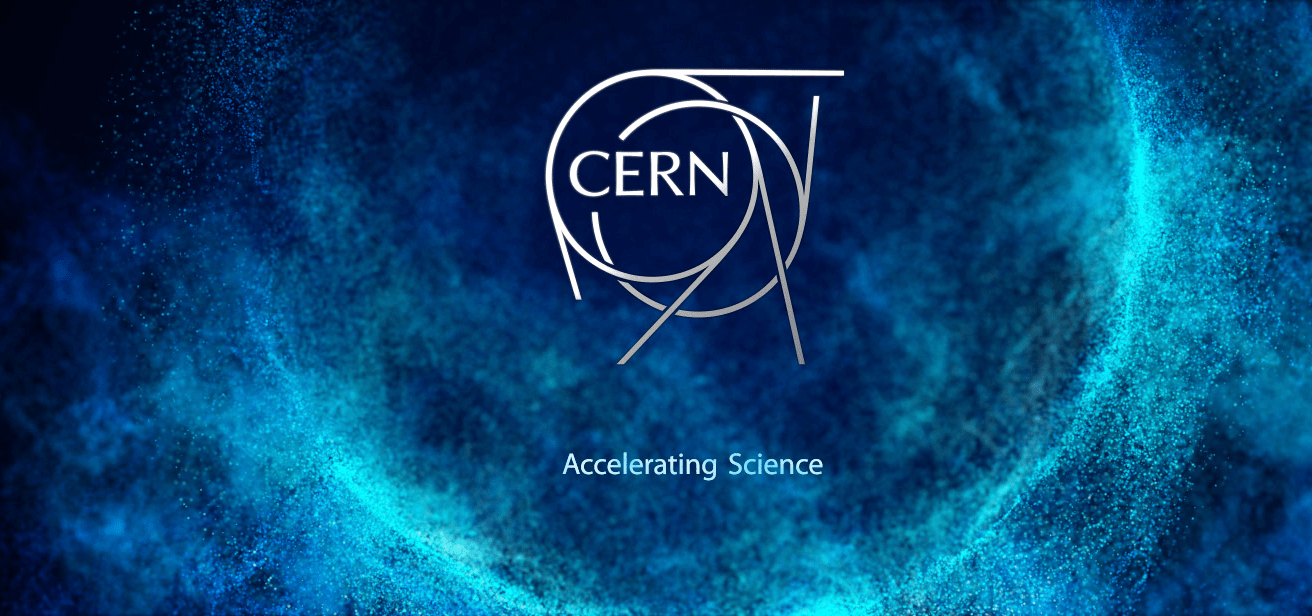




















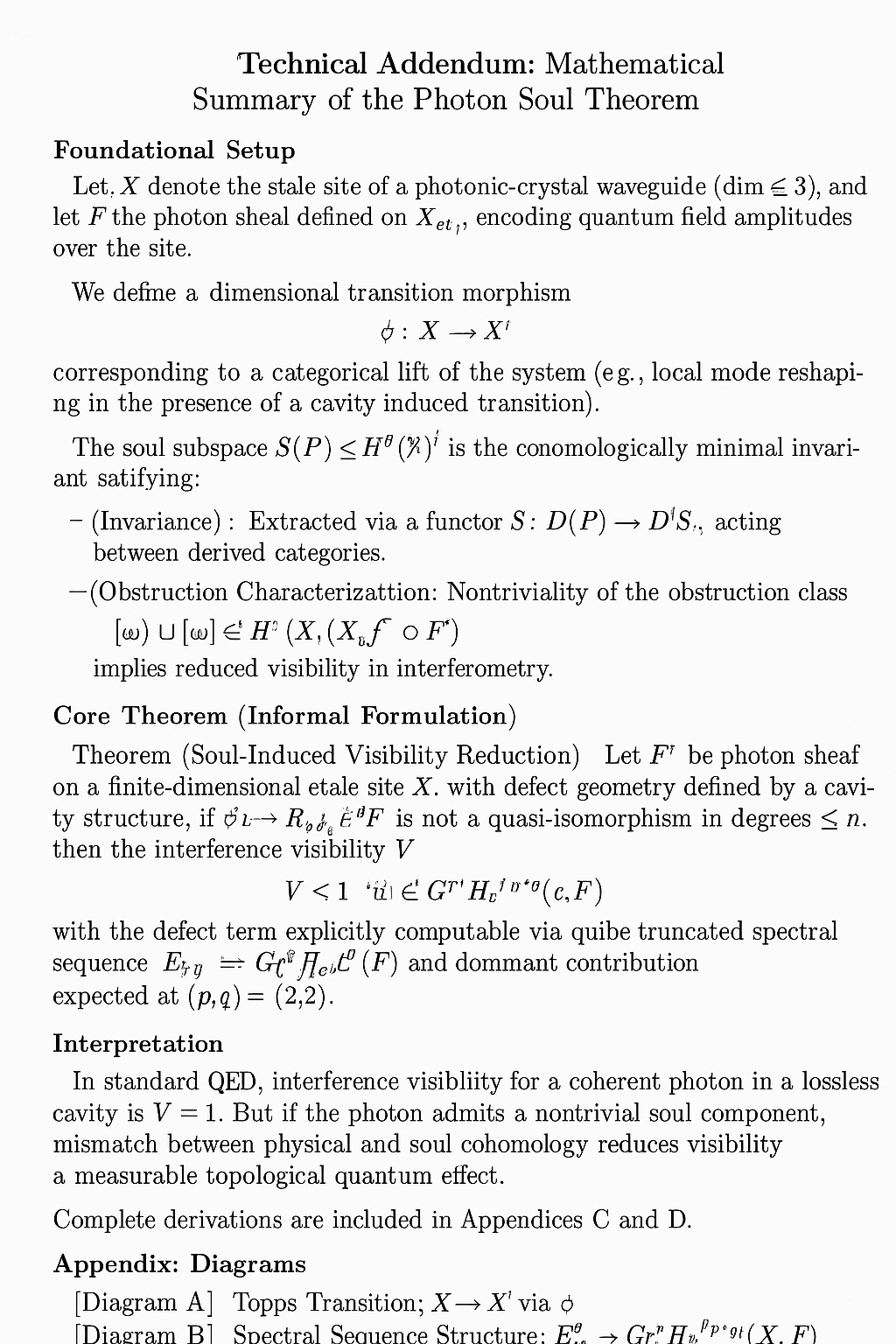







































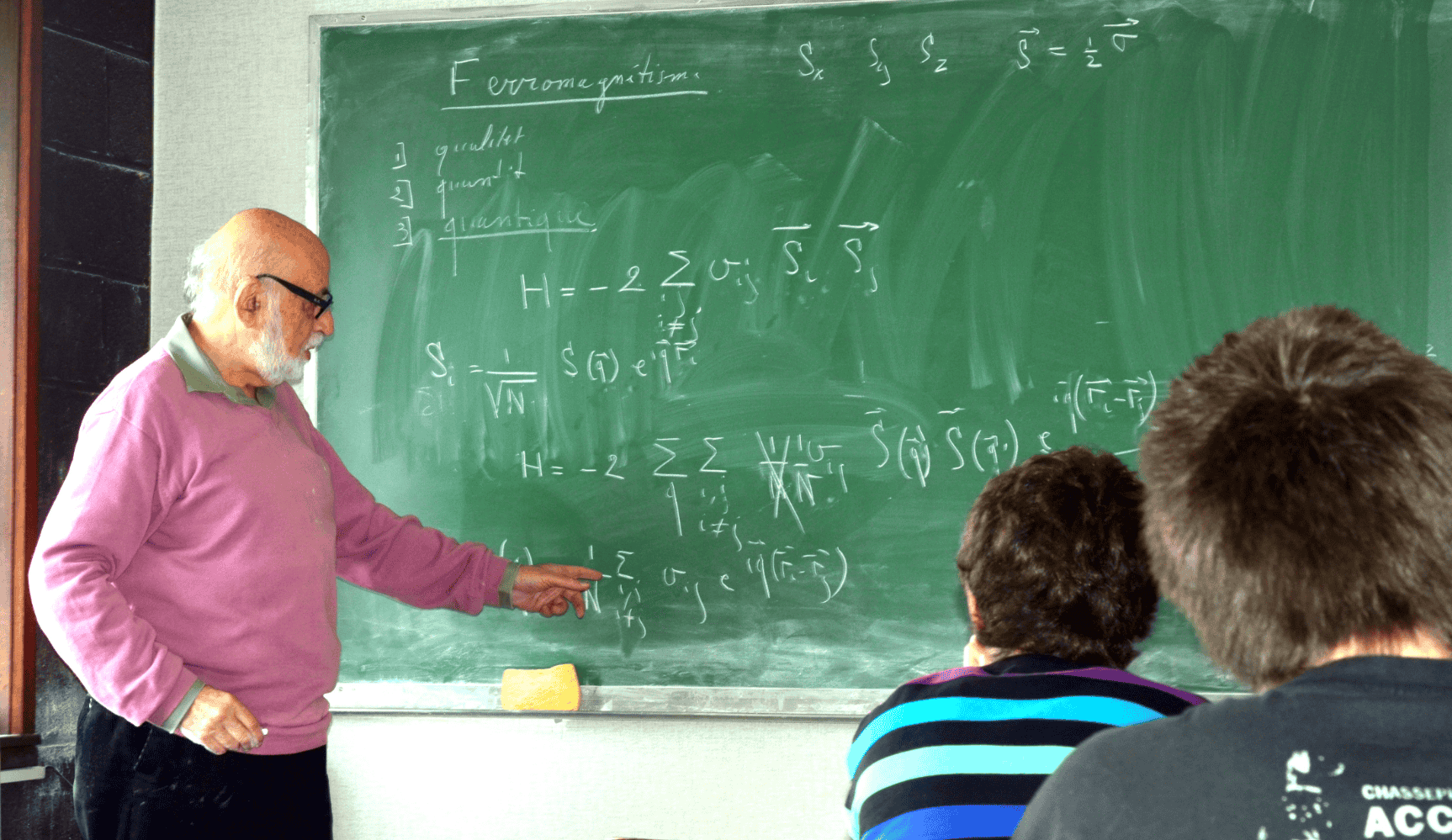




























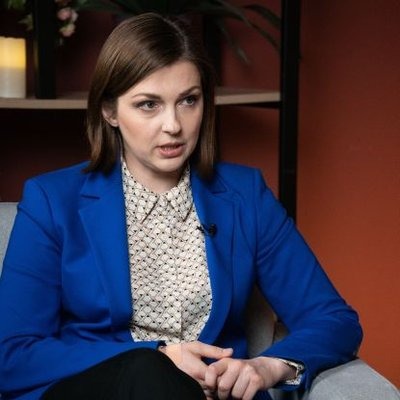



 Perhaps smoothies: i could blend almond powder and a spoonful of coriander honey with my favorite fruits and vegetables for a nutritious smoothie that supports brain health. These ingredients offer
a combination of flavors and health benefits that are hard to beat. I recommend to start experimenting with these brain-boosting ingredients in your cooking and enjoy the delicious benefits they bring to your table and
your health.Thank me later.
Perhaps smoothies: i could blend almond powder and a spoonful of coriander honey with my favorite fruits and vegetables for a nutritious smoothie that supports brain health. These ingredients offer
a combination of flavors and health benefits that are hard to beat. I recommend to start experimenting with these brain-boosting ingredients in your cooking and enjoy the delicious benefits they bring to your table and
your health.Thank me later.



